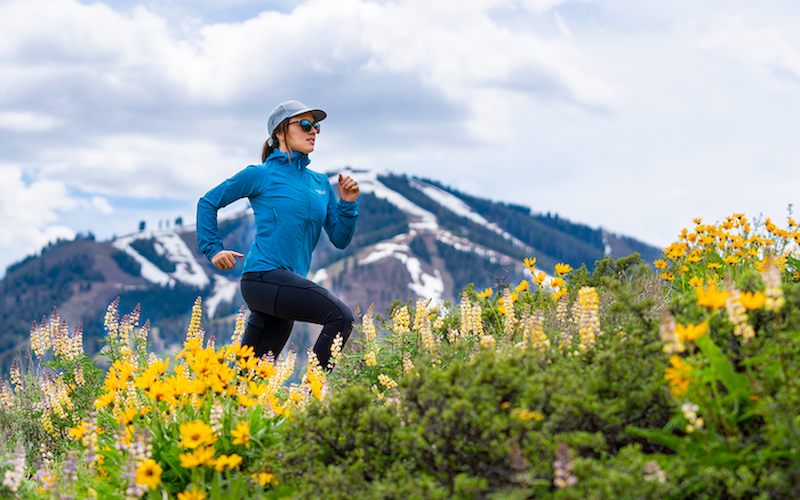The spring and early summer season is chalked full of fresh energy as nature renews plant life, baby animals are born, and the landscapes burst into full bloom. Sun Valley is blanketed with lush green hills and abundant wildflowers which are prime for awe-inspiring hikes displaying a plethora of color. Below is a go-to list of locations within walking distance from Sun Valley Lodge covered with lupine, arrowleaf balsamroot, and many other native flowers.
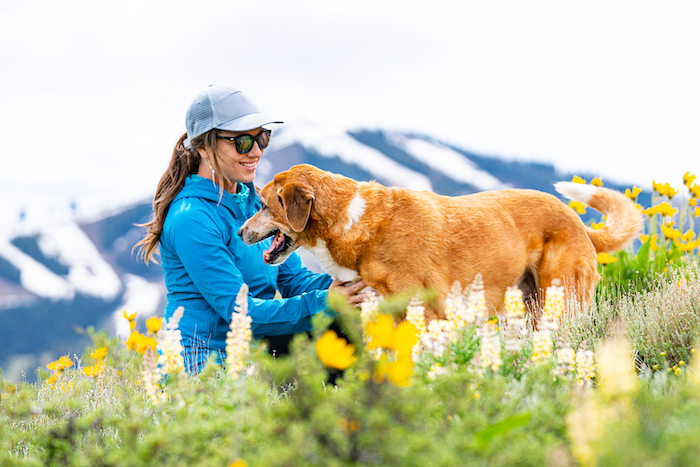
Please be respectful of the native plants by not picking them and staying on the designated trails. Here are a few resources for maximizing your time among the wildflowers:
Learn how to Leave No Trace while on the trail at LNT.org
Picture This is an app on your phone to help identify plants and learn how they benefit the ecosystem
For additional trails, visit the BCRD trail link website
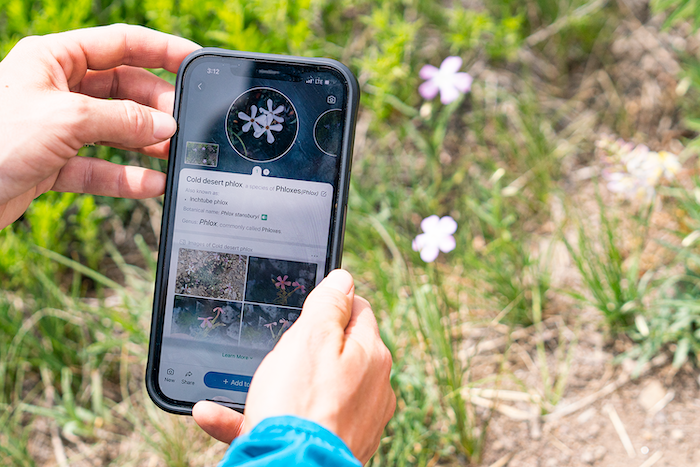
Trails by Sun Valley Resort
White Clouds Loop
A trail fit for every fitness level with very quick access from downtown Ketchum. The best parking is at Sun Valley Lodge then simply cross the road to the path which loops around the White Clouds Golf Course. This trail has very little elevation gain and can be taken as a four mile loop or an out-and-back in either direction. The south facing slopes are engulfed by lupine, arrowleaf balsamroot and several other beautiful wildflowers. The optimal time to hike this trail is morning or evening because there is no shade. Bald Mountain is the highlight of the view paired with sites of the jagged Pioneer Mountains and valley views sprinkled with colorful blooms.

Proctor Mountain
This destination is an iconic gem with remarkable views of Bald Mountain and the town of Ketchum below. Along the descent of this trail, Proctor Mountain hosts one of the first operating chairlifts in the world! It was built in 1936 and its remnants are still standing tall. This route is one of the first places in the valley to blossom with bright yellow arrowleaf balsamroot and several other wildflowers. The three mile loop increases 1,133 feet elevation transitioning from the flat valley floor, through aspen groves, several steep switchbacks between shaded evergreens, and topping out at the point of the mountain before a steep descent back to the trailhead.
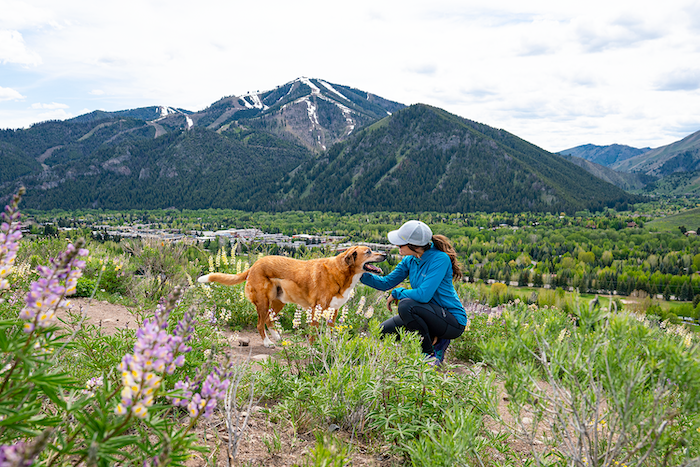
Bald Mountain
Expansive wildflower blooms cover the open spaces of Bald Mountain. There are several trail options weaving between the flowers. The most common trek starts at River Run Plaza along the Big Wood River before switchbacking up the heavily wooded hillside. The wooden overlook platform is a prime midway break before continuing through the aspens and mature evergreens to the Roundhouse Connector trail. Keep an eye out for the Louis Stur memorial and water fountain near the junction. The summit is reached at the top of the Challenger ski lift with jaw-dropping 360 views. The chairlift runs in the summer, so you could opt for a lift ride down or vice versa.

Wildflowers
Characteristics to identify, what uses the flower ecologically, what eats the flower
Arrowleaf Balsamroot is the vibrant yellow flower that blankets the south slopes of the valley during spring. A perennial herb native to North America, this plant grows back every year. The bright yellow flower is 4-5 inches and the plant height reaches 1-2 feet. It’s identifiable by the large arrow shaped green leaves. While it’s edible, the bitter taste is not inviting!
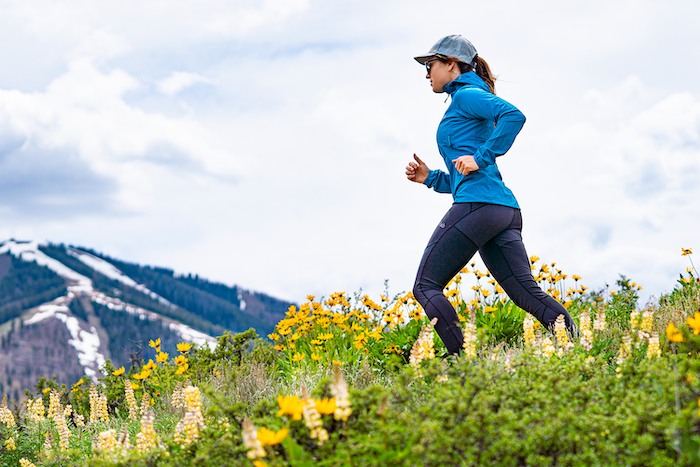
Lupine is another unmistakable staple in the Wood River Valley. Nicknamed bluebonnets for the shape of the flower, these beauties are in a variety of colors from purple to yellow. The seeds spread easily and are often found in an abundance. While the plant is toxic to humans and animals, the nectar rich tubular flowers are very attractive to pollinators like bees and hummingbirds. Lupine is also a food source for insects and caterpillars which in turn attracts a variety of birds such as bluebirds, warblers, tanagers and more. Ground nesting birds, like sparrows and finches, use the clusters of lupine to provide cover for their homes.
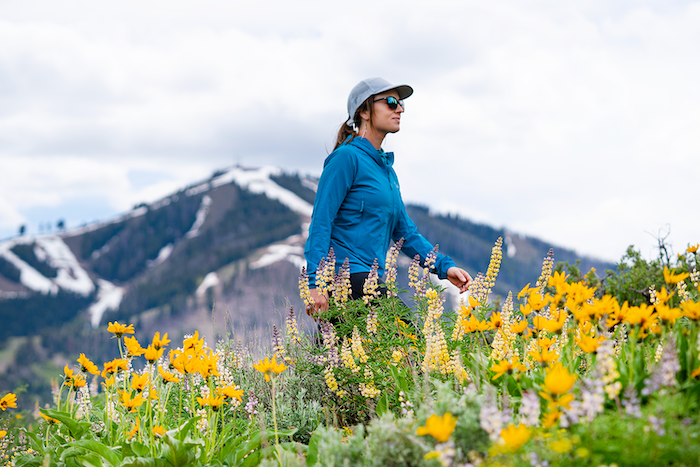
Antelope Bitterbrush is part of the rose family with a delicious scent. Walking the White Clouds loop, you’ll catch the sweet smell and notice a shrub 3-10 feet tall with little yellow or white flowers when it’s in bloom during late spring. High in protein, it’s an important plant for deer, pronghorn and elk to eat. The large brush coverage also provides seeds and habitat for small ground animals.
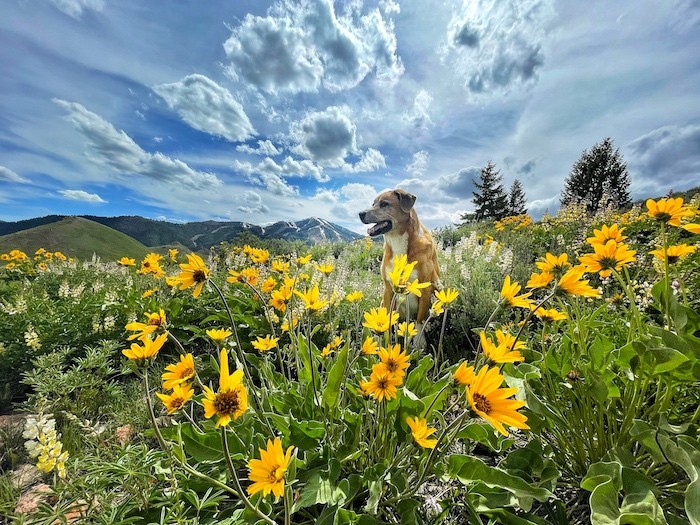
Common Pacific Pea is indigenous to western North America and grows perennially in shady areas. It’s a vining plant in the pea family with tendrils that ground on surrounding vegetation. While a plant in the pea family sounds like a tasty treat, this species of legumes should never be ingested.
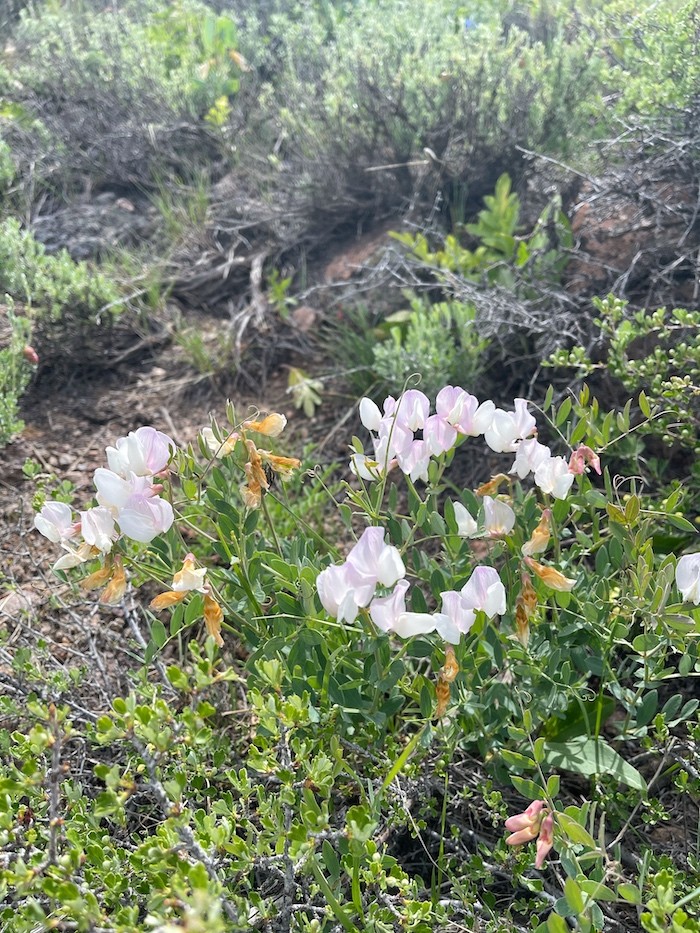
Larkspur or twolobe larkspur thrives in sunlight. The elegant deep blue violet blooms are captivating to look at, but beware all parts of this plant are extremely toxic to humans and can cause skin irritation if touched, and can cause death if ingested. While toxic to humans, this plant attracts hummingbirds for the excellent source of nectar.
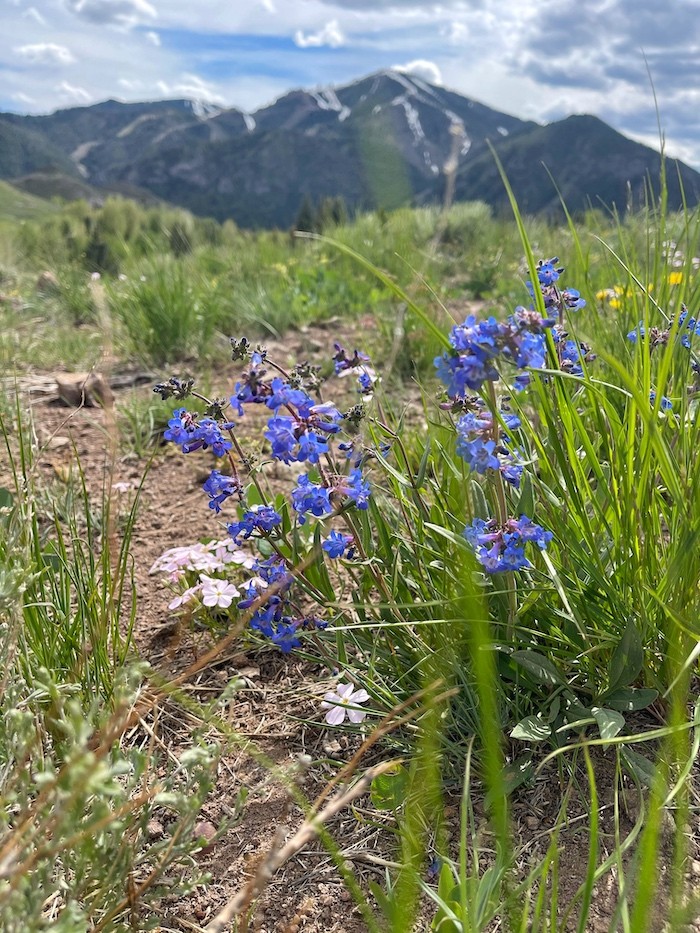
Cold Desert Phlox is another lightly sweet scented plant that grows low to the ground. It’s identified by the long narrow leaves and five-petalled pink or white flowers about half an inch in diameter. This little 2-8 inches tall subshrub blooms in the spring and summer providing food and habitat for many moth caterpillar species.
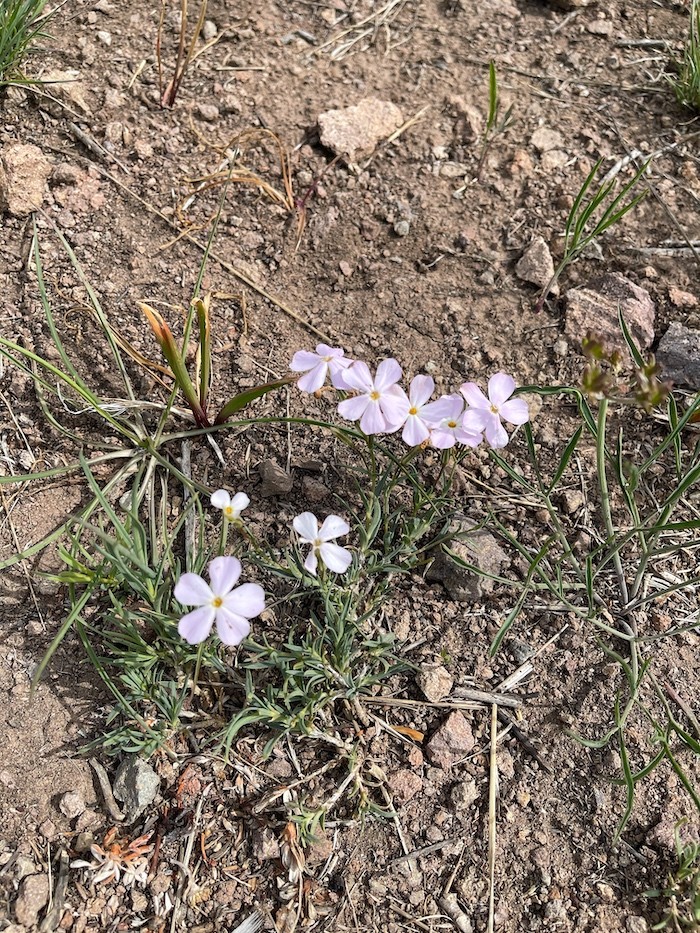
Sulphur Flower is a species of buckwheat. It’s both a cold and drought tolerant shrub native to North America that grows very low to ground. The gray foliage is topped with little yellow or red flowers. It’s an excellent ground cover for poor soil conditions.
Limestone Hawksbeard is a little yellow flower part of the daisy family indiginous to North America. Sage grouse love to eat this perennial herb that can grow up to 2 feet tall.
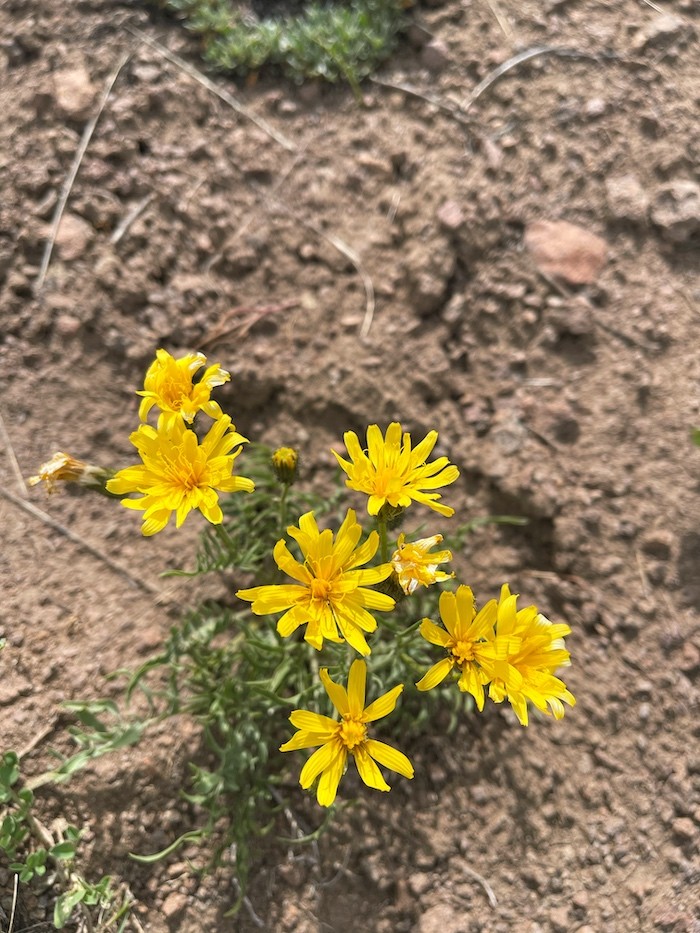
Death Camas grows in hot and dry meadows or hillsides by sagebrush. It boasts a white flower and grows from a bulb resembling an onion; however, it does not smell like an onion. Called death camas for a reason, this herb is extremely toxic to humans and livestock.
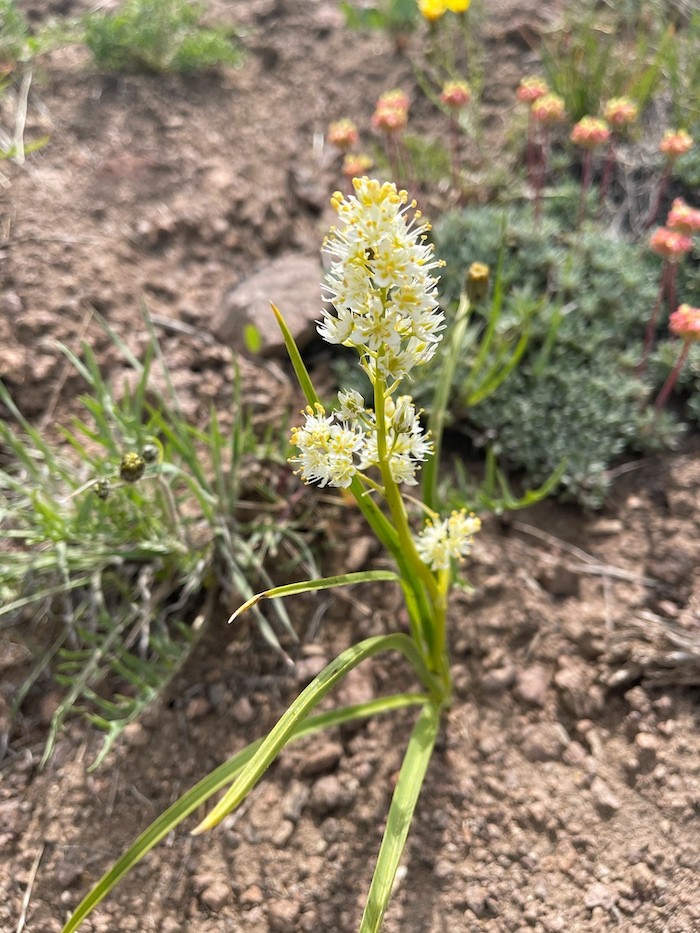
Amy David is a Sun Valley Resort athlete and a guide for Sawtooth Mountain Guides. In this blog she shares information about the vibrant spring wildflowers and where you can find them along the hiking trails of Sun Valley.
